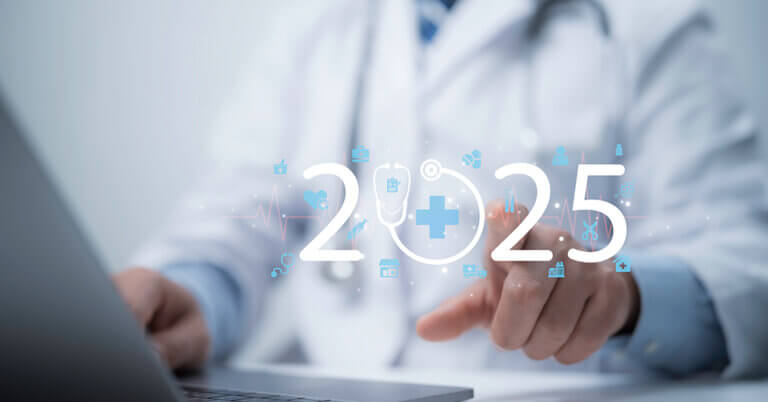September 19, 2018
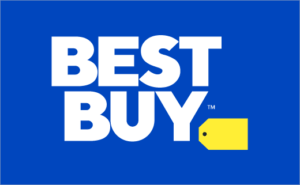
Geeking-Up Healthcare: Consumer Giant Best Buy Makes a Big Move
Healthcare has experienced a parade of surprising megamergers and acquisitions during the last year. At first glance, Best Buy’s August acquisition of GreatCall may be the most startling. At a deeper level, however, Best Buy’s movement into healthcare reflects a nuanced understanding of consumerism, retail market dynamics and America’s need for more connected, holistic care services.
Best Buy’s acquisition of GreatCall is part of a broader retail-driven movement to engage consumers more directly in their healthcare. Retail giants, including Amazon, Apple, CVS, Walgreens and Walmart, are joining Best Buy in targeting healthcare for sales growth. Their collective efforts are reconfiguring healthcare’s competitive landscape.
Greatness Calling
 GreatCall’s founders, Arlene Harris and Marty Cooper, understood that enhancing communication is essential to well-being. Formed in 2006, GreatCall’s initial vision was to connect people through a simple phone that was easy to navigate. The concept caught on particularly well with elderly subscribers.[1]
GreatCall’s founders, Arlene Harris and Marty Cooper, understood that enhancing communication is essential to well-being. Formed in 2006, GreatCall’s initial vision was to connect people through a simple phone that was easy to navigate. The concept caught on particularly well with elderly subscribers.[1]
 From that modest beginning, GreatCall now operates a broad-based platform that incorporates phones, apps, wearables, urgent care, alert services, health coaching and more. They target the large and growing market of Americans who are 65 and older. Their simple and profound goal is to improve life quality for America’s seniors and those who care for them.[2]
From that modest beginning, GreatCall now operates a broad-based platform that incorporates phones, apps, wearables, urgent care, alert services, health coaching and more. They target the large and growing market of Americans who are 65 and older. Their simple and profound goal is to improve life quality for America’s seniors and those who care for them.[2]
With an $800 million purchase price, GreatCall is the largest acquisition in the storied history of America’s leading consumer electronics company. This is how Best Buy’s press release describes GreatCall:
GreatCall is a leading provider of connected health and personal emergency response services to the aging population, with more than 900,000 paying subscribers. It has an award-winning approach to customer care that helps older consumers stay independent longer, provides peace of mind to family caregivers and reduces health care costs.
It offers an innovative combination of easy-to-use mobile products and connected devices tailored for aging consumers. In addition, GreatCall has a range of services, including a simple, one-touch connection to trained, U.S.-based agents who can connect the user to family caregivers, provide general concierge services, answer service-related questions and dispatch emergency personnel.
Best Buy’s logic in acquiring GreatCall and its approach to healthcare services come into focus when examining its strategic choices over the arc of its 50-plus year history.[3] By adapting to changing consumer needs, Best Buy has withstood market pressures that have toppled many of its competitors, most notably RadioShack.
Dancing with Tornados
 Founded in St. Paul as the “Sound of Music” in 1966, the company grew to 9 stores across Minnesota over the next 15 years. In 1981, a tornado blew the roof off its largest and most profitable store in Roseville. The resulting “Tornado Sale” offered “best buys” and generated record-level sales.
Founded in St. Paul as the “Sound of Music” in 1966, the company grew to 9 stores across Minnesota over the next 15 years. In 1981, a tornado blew the roof off its largest and most profitable store in Roseville. The resulting “Tornado Sale” offered “best buys” and generated record-level sales.
The tornado experience transformed the company. It renamed itself Best Buy in 1983, expanded into computers and adopted a low-price “warehouse-style” consumer experience. As such, Best Buy was an early, successful entrant (along with Walmart) into big-box retailing. Its stores offered a relaxed, customer-friendly shopping environment that avoided high-pressure, commission-driven sales practices.
By the late-2000s, Best Buy was riding high with consistent profitability, global operations and annual revenues approaching $50 billion. Forbes Magazine recognized Best Buy as its “company of the year” in 2004. Fortune Magazine listed Best Buy among its “most admired companies” in 2006. Its name became synonymous with consumer electronics.
By 2012, Best Buy confronted a market-driven tornado. The Amazon-led internet boom challenged Best Buy’s long-term viability. Sustained operating losses and declining sales forced management to accept a stark truth – the company’s business model was not sustainable. To remain relevant, Best Buy had to adapt its business model to new market realities and changing consumer preferences.
In September 2012, current CEO and Chairman Hubert Joly took the helm and launched the “Renew Blue” strategy. It had the following 5 pillars.
- Reinvigorate the customer experience.
- Attract “transformational leaders” and energize employees.
- Work with vendors to innovate and drive value.
- Increase the company’s ROIC by growing revenue and efficiency.
- Make the world a better place through recycling and by giving people access to technology.
Under Joly’s leadership, Best Buy became more efficient, recruited talented employees, upgraded its digital platform and, most importantly, connected directly with consumers by offering services and convenience customers wanted.
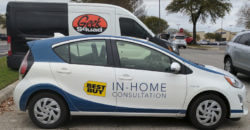 The expansion of its “Geek Squad” has been pivotal to Best Buy’s renewed success. Price isn’t the only buying consideration in consumer electronics. Many customers, notably women and the elderly, value the Geek Squad’s in-home, turn-key installation, maintenance and repair services. Best Buy’s well-trained, likable technicians deepen customer connection and loyalty.
The expansion of its “Geek Squad” has been pivotal to Best Buy’s renewed success. Price isn’t the only buying consideration in consumer electronics. Many customers, notably women and the elderly, value the Geek Squad’s in-home, turn-key installation, maintenance and repair services. Best Buy’s well-trained, likable technicians deepen customer connection and loyalty.
Reconfigured Retail
Amazon has redefined the retail industry. Successful retailers, like Best Buy, blend the physical and digital elements of retail shopping seamlessly. An insightful September 3rd New York Times article on retailing’s “hard lessons” notes that “successful stores are a cross between a fast-food drive-through and a hotel concierge.”
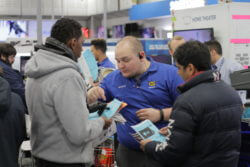 Best Buy proves the point. They relentlessly focus on meeting customer expectations. They offer free in-home consults. Customers can purchase products either online or in stores with the comfort of price match guarantees and easy return policies.
Best Buy proves the point. They relentlessly focus on meeting customer expectations. They offer free in-home consults. Customers can purchase products either online or in stores with the comfort of price match guarantees and easy return policies.
Retail stores give customers the ability to touch and feel products. For many consumers, this is an essential component of their purchasing decision. As retailers adapt to marketplace demands, their stores are now operating as warehouses and distribution centers. They provide inventory to fulfill online orders and offer convenient pick-up locations.
Most importantly, retail stores generate brand strength. Even Amazon is now investing in retail storefronts. While not all retailers are prospering, retail sales nationwide are booming as Americans spend more. Store closings are down. Hiring is up, as are profits. Many retailers are making significant new capital investments in their stores.[4] Best Buy has even started to partner with Amazon.
This brings us back to Best Buy’s acquisition of GreatCall. Having survived retailing’s “tornados,” Best Buy understands “in its bones” the necessity of meeting customer needs in flexible, tailored ways. The company’s “New Blue” strategy strives to “enrich lives by addressing key human needs.”
The acquisition press release precisely describes how Best Buy will attack the healthcare marketplace:
[Best Buy is] specifically focused on addressing the growing needs of the aging population with the help of technology products, services and solutions. The health space is a large, growing market where technology can help in particular address the needs of aging consumers, their caregivers, payers and providers. Today, there are approximately 50 million Americans over age 65, a number that is expected to increase by more than 50 percent within the next 20 years.
GreatCall’s premier product is the Jitterbug mobile phone service. With big print and easy-to-use navigation, the Jitterbug phone is ideal for seniors. It connects them to the services they need when they need them. My mother had one and loved it. Imagine Best Buy delivering “Geek Squad” in-home care capabilities to GreatCall’s large and growing subscriber base. Powerful.
Filling Healthcare’s Retail Void
Most traditional health companies focus on optimizing revenues through manipulation of complex payment formularies. This can be a successful short-term strategy but misses consumerism’s increasing influence on the design and delivery of healthcare services
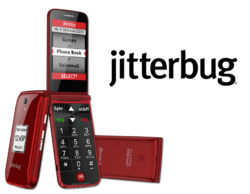 With little competition from incumbents, sophisticated retailers are rushing into healthcare’s consumerism void. For retailers, healthcare is a target-rich environment. They’re nimble, disciplined and consumer-oriented. They play to win.
With little competition from incumbents, sophisticated retailers are rushing into healthcare’s consumerism void. For retailers, healthcare is a target-rich environment. They’re nimble, disciplined and consumer-oriented. They play to win.
The Amazon-led digital and consumer revolution is coming later to healthcare than other industries. Its impact, however, will be just as profound. Like Best Buy in 2012, traditional health companies confront existential challenges to their business models.
At issue is which health companies will have the vision, discipline and adaptability to build sustainable post-reform business models. The consumer-driven marketplace determines winners and losers. Best Buy is still relevant in consumer electronics. RadioShack isn’t.
Like Best Buy, winning health companies will blend digital capabilities seamlessly within physical locations that meet customers’ service need and preferences. They will remain relevant by demonstrating every day, in all locations, that outcomes matter, customers count and value rules.
SOURCES
[1] https://www.fiercewireless.com/wireless/jitterbug-anti-mvno
[2] https://www.fiercewireless.com/wireless/best-buy-s-biggest-acquisition-ever-greatcall-mvno-targeting-seniors
[3] Sources include the following: https://www.forbes.com/sites/greatspeculations/2018/06/07/best-buy-rising-from-ashes-to-lead-new-retail-paradigm/#392b34f1b443; https://www.retaildive.com/news/how-best-buy-is-winning-against-all-odds/512998/; and https://en.wikipedia.org/wiki/Best_Buy



